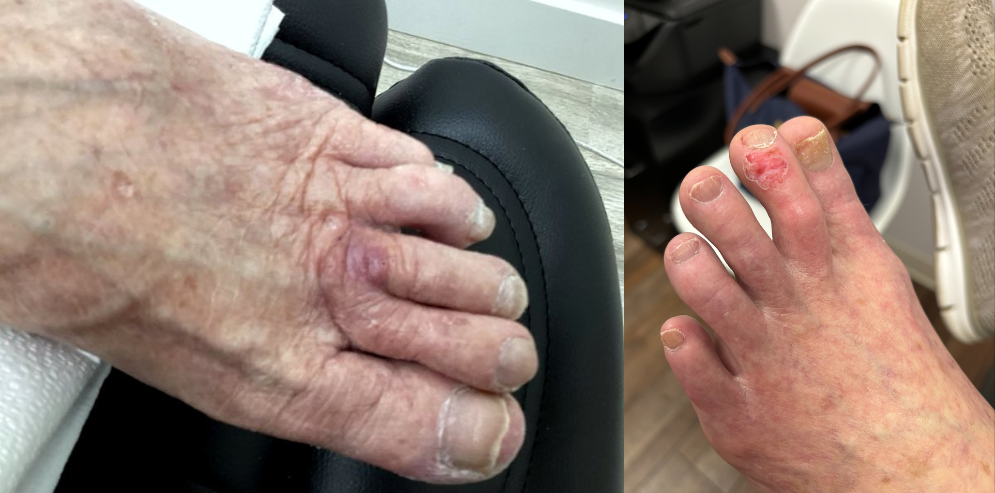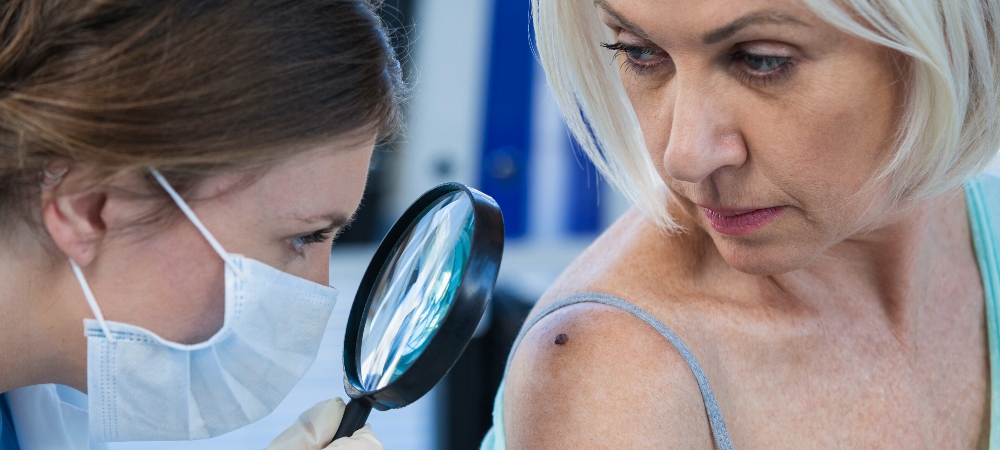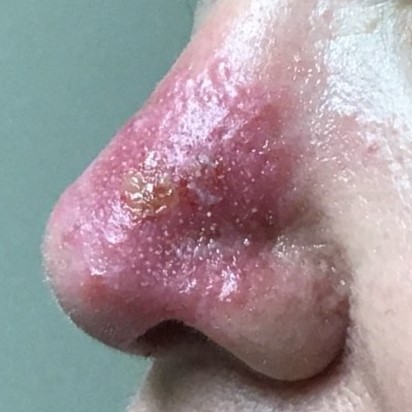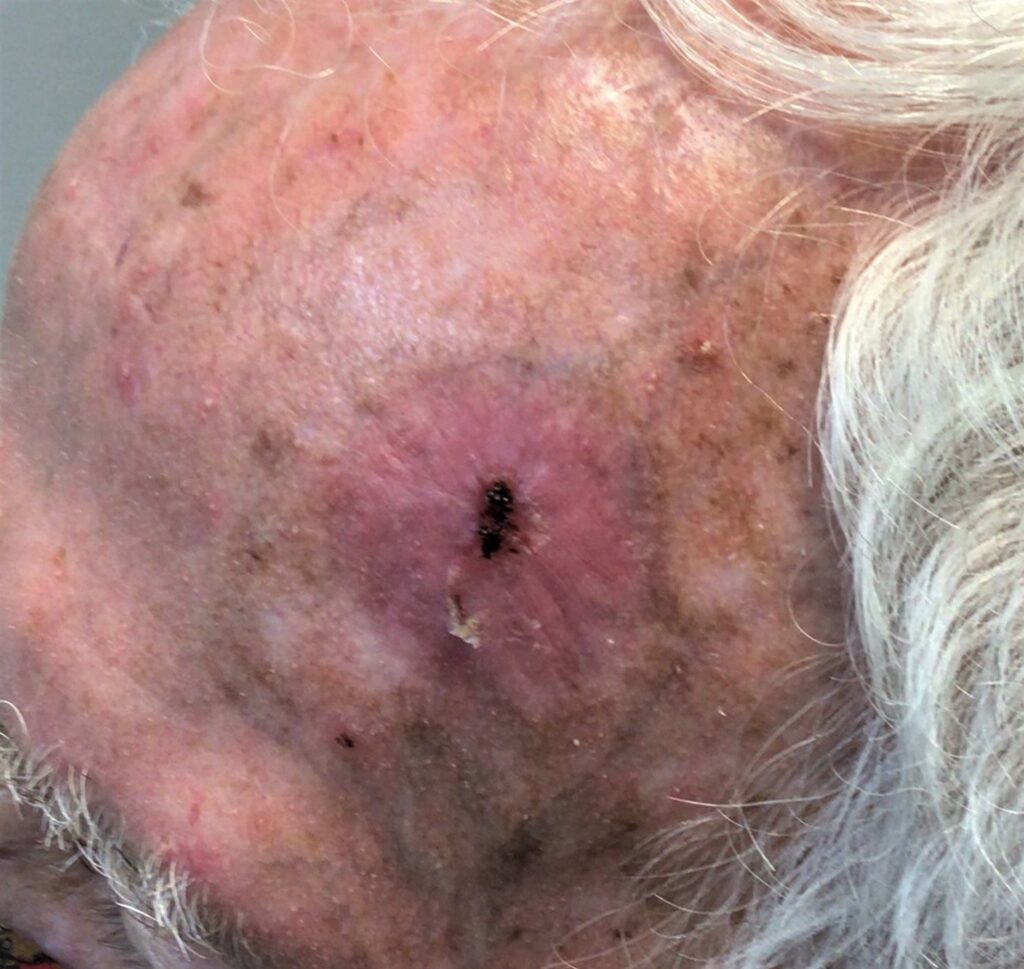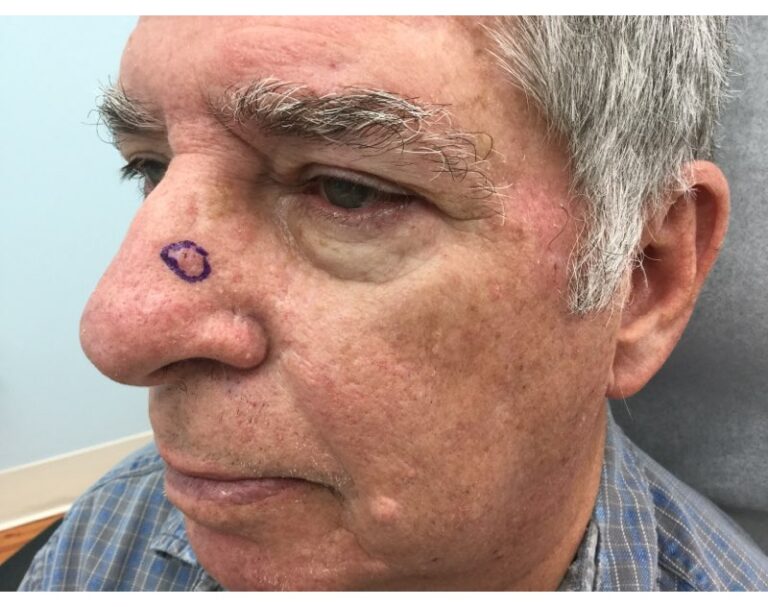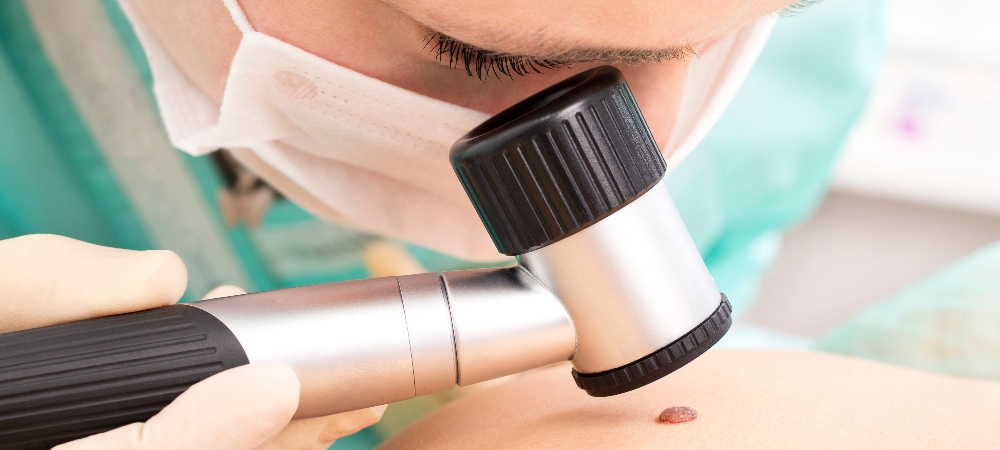
Almost everyone has a few harmless moles on their body, so how can you tell the difference between a common mole and a skin cancer area? In this guide, we’ll walk you through some key differences between common moles, atypical moles, and potential skin cancer areas. If you have any concerns, it’s always a good idea to schedule an appointment with your medical provider for peace of mind.
Common Moles and Atypical Moles
The common mole is small, symmetrical, and unchanging. These moles present no health risk for the patient, and most patients have at least a few. However, there are many types of moles that look different from the common variety. Some moles can look so similar to melanoma that you’ll need a dermatologist to diagnose the condition properly. And while these moles are not cancerous, they may increase your risk of melanoma, so it’s good to keep an eye on them—and of course, protect your skin. Here are a few of the most common atypical moles:
- Atypical moles, or dysplastic nevus, are larger moles with an unusual shape and color.
- Congenital moles are moles that develop at birth, ranging from small to large in size.
- Acquired moles, or common moles, develop after birth.
- Spitz nevus are pink, raised, dome-shaped moles that may bleed.
Identifying Atypical Moles
If you’re worried that your moles could be potential skin cancer areas, contact your medical provider. They might recommend a surveillance program to monitor any new growth or changes, or they might request a biopsy. Additionally, you can perform monthly melanoma checks utilizing the ABCDE guidelines:
- Asymmetry: Is the mole uneven from one half to the other?
- Border: Is the border uneven, scalloped, notched, or blurred?
- Color: Is the mole multiple colors or changing colors?
- Diameter: Is the mole larger than a pencil eraser?
- Evolving: Has the mole changed recently? Is it painful, swollen, itching, or bleeding?
Identifying Other Common Forms of Skin Cancer
Although melanoma generally resembles a mole, many common types of skin cancer do not. For example, basal cell skin cancer commonly appears as a pearly, skin-colored, or pinkish bump. This skin cancer’s appearance may vary depending on the type of basal cell skin cancer in question. Squamous cell skin cancer is also common and might resemble a wart.
If you’re concerned about any changes to your skin, it’s always a good idea to schedule a screening with a professional dermatologist. You should also have a general idea of what skin cancer can look like on various parts of the body.
Contact GentleCure for Additional Skin Cancer Diagnosis and Treatment Information
For more information about skin cancer and its treatment, talk to your doctor today. If you have questions, you can also contact the skin cancer information specialists at GentleCure. Feel free to review our Frequently Asked Questions and our blog to learn more about diagnosis, treatment, and outcomes, or give us a call at 855-936-4411.
